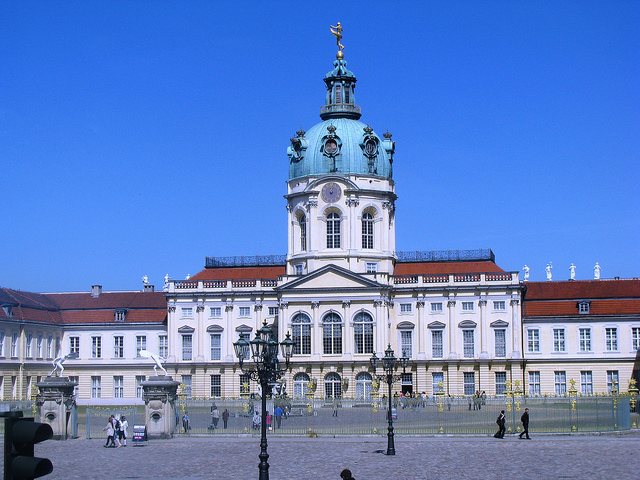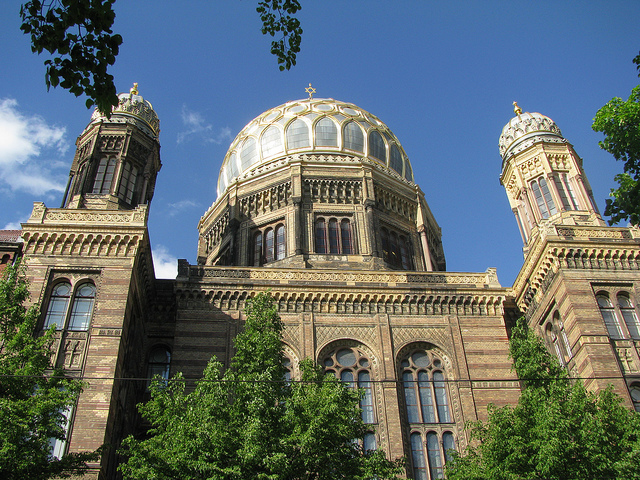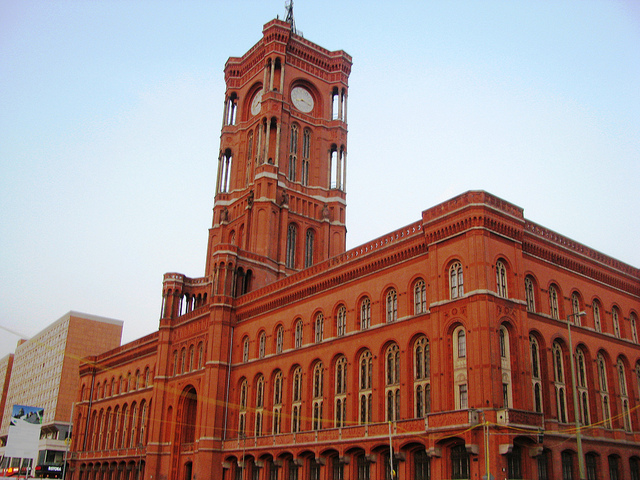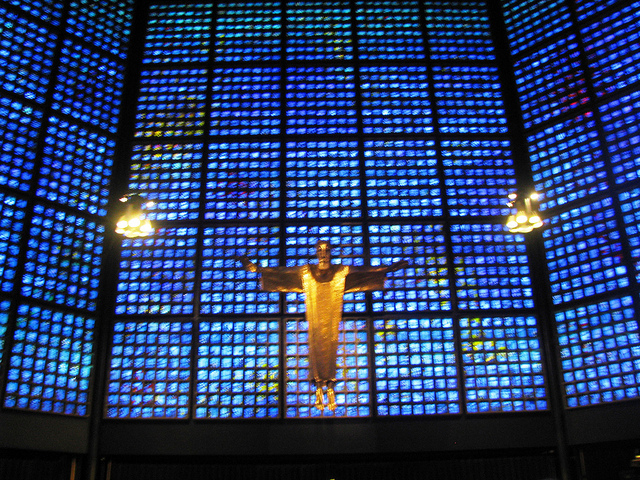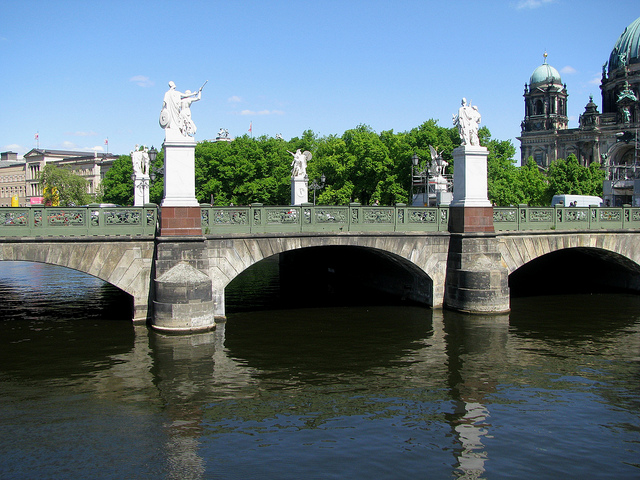My second day in Berlin, April 30, 2011, started with brilliant sunshine. I took the S-Bahn from the Lichtenberg district and arrived within less than 20 minutes downtown at Alexanderplatz. This large public square is in the heart of Berlin’s Mitte (= Centre) district and was named after Russian Tsar Alexander I who visited Berlin in 1805. Originally a cattle market, it became the centre of the city’s nightlife in the early 20th century. Several cabarets were located in the area and big department stores had set up shop on the big square at that time. Since the early 1900s this square has been a transportation hub in the city with several U-Bahn and S-Bahn lines converging here.
During the Second World War, all the buildings surrounding the square were essentially obliterated. Right underneath there was actually a very deep bunker that gave the population shelter from the aerial bombardments that terrified the city towards the end of the war. After the war, Alexanderplatz was part of East Berlin and it took several years for all the debris from the bombings to be cleared. From the mid 1960s to 1989, the role of the square was then transformed in accordance with the agenda of the socialist East German government. It became a pedestrian zone and numerous non-descript concrete highrises were built around the edge of the square.

I am not a big fan of 1960s and 1970s architecture, and when I came out of the S-Bahn station I was greeted right away by a rather austere looking assortment of grey buildings. In the centre of the square there was a market with stalls selling all sorts of clothing, souvenirs, trinkets, baked goods, and fruits. Many locals were enjoying the warm late morning sun with a typical Berlin treat: “Currywurst”, a popular fast-food dish composed of hot pork sausage smothered in curry ketchup, a mixture of ketchup with plenty of curry powder. I decided to have “Kartoffelpuffer” for breakfast, filling and scrumptious German potato pancakes. A small petting zoo and a carousel were set up for the children, and the square started to fill up with people out for a Saturday stroll.
Adjacent to Alexanderplatz is one of Berlin’s landmarks: the Berlin TV Tower, constructed between 1965 and 1969 by the former East German administration. With a height of 368 meters, this tower is still the tallest structure in all of Germany. High-tech rickshaws were parked at the base of the tower, ready to whisk visitors on a quick tour of the city. Steps away the imposing Red City Hall was gleaming in the sun. It was also heavily damaged during WWII and reconstructed between 1951 and 1958. With its distinctive tower and red brick facade, the “Rotes Rathaus” is one of Berlin’s most distinctive buildings.

Across the way I walked to a green space that is anchored by the Neptune Fountain, created in the Neo-Baroque Style in 1886. The four figures surrounding Neptune actually represent Germany’s greatest Rivers: the Rhine, the Oder, the Elbe and the Vistula. Adjacent on the north side is the Marienkirche, St. Mary’s Church, whose parish was originally established in the second half of the 13th century. It was also heavily damaged during the Second World War and carefully restored by the East German government during the 1950s.
With my Berlin Welcome Card I had access to a sightseeing tour on a double-decker bus, so I decided to cover more ground and explore some of Berlin’s best known sights. I hopped on the bus at Karl-Liebknecht- Strasse across from the Marienkirche and our first stop was at the Berlin Cathedral, the Berliner Dom. Then we continued on Berlin’s most famous boulevard, Unter den Linden, at the end of which we glimpsed a view of the Brandenburg Gate.

